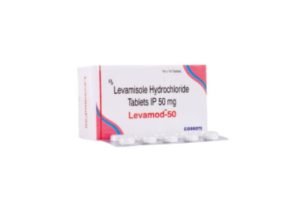
Azithromycin Overview
Azithromycin is a macrolide antibiotic that inhibits bacterial protein synthesis by binding to the 50S ribosomal subunit. It is primarily bacteriostatic but can be bactericidal at higher concentrations. Azithromycin is effective against a wide range of gram-positive and gram-negative bacteria and is frequently used because of its broad-spectrum activity, long half-life, and excellent tissue penetration.
Brand Names and Formulations
Azithromycin is available under various brand names, including:
- Zithromax
- Zmax
- Azasite (ophthalmic solution)
Common formulations and strengths:
- Tablets: 250 mg, 500 mg.
- Oral Suspension: 100 mg/5 mL, 200 mg/5 mL.
- Injectable: 500 mg vial.
- Ophthalmic solution: 1% (for bacterial conjunctivitis).
Uses/Indications
Azithromycin is used to treat a wide variety of bacterial infections, particularly those affecting the respiratory tract, skin, and sexually transmitted infections (STIs). It is favored for its once-daily dosing and short course of treatment. Common indications include:
- Respiratory Tract Infections:
- Pharyngitis, tonsillitis, sinusitis, bronchitis, and community-acquired pneumonia (CAP).
- Skin and Soft Tissue Infections:
- Cellulitis, impetigo, and other skin infections.
- Sexually Transmitted Infections (STIs):
- Chlamydia trachomatis infections and as part of combination therapy for gonorrhea.
- Ear Infections (Otitis Media):
- Acute otitis media in children.
- Traveler’s Diarrhea:
- Particularly effective for travel-related gastrointestinal infections caused by susceptible bacteria.
- Mycobacterium avium Complex (MAC):
- Prevention and treatment in patients with HIV/AIDS.
- H. pylori Infection:
- As part of combination therapy to eradicate Helicobacter pylori in peptic ulcer disease.
- Bacterial Conjunctivitis:
- Azithromycin ophthalmic solution for the treatment of bacterial eye infections.
Dosage
- Adults:
- Respiratory infections: 500 mg on day 1, followed by 250 mg once daily for 4 days.
- Chlamydia infections: Single dose of 1 g.
- Pneumonia: 500 mg IV for at least 2 days, followed by 500 mg orally to complete a 7-10 day course.
- Children:
- Acute otitis media: 10 mg/kg on day 1, followed by 5 mg/kg once daily for 4 days.
- Pharyngitis/Tonsillitis: 12 mg/kg once daily for 5 days (max 500 mg/day).
- Ophthalmic use: One drop of azithromycin 1% solution in the affected eye(s) twice a day for 2 days, then once daily for 5 days.
Side Effects
Common side effects of azithromycin include:
- Gastrointestinal Effects:
- Diarrhea, nausea, vomiting, and abdominal pain are the most common side effects.
- Allergic Reactions:
- Rash, pruritus, and, rarely, anaphylaxis or Stevens-Johnson syndrome.
- Liver Toxicity:
- Elevation of liver enzymes and, rarely, hepatotoxicity or cholestatic hepatitis.
- Cardiovascular Effects:
- QT Prolongation: Azithromycin can prolong the QT interval, leading to an increased risk of arrhythmias, particularly torsades de pointes.
- Headache:
- Headache and dizziness have been reported but are usually mild.
- Superinfections:
- As with many antibiotics, prolonged use can lead to secondary fungal or bacterial superinfections, including oral or vaginal candidiasis.
Contraindications
Azithromycin is contraindicated in:
- Hypersensitivity:
- Allergy to azithromycin, erythromycin, or other macrolide antibiotics.
- History of Cholestatic Jaundice/Hepatic Dysfunction:
- Previous azithromycin use resulting in liver injury or jaundice.
- Severe Liver or Kidney Disease:
- Use with caution in patients with significant hepatic or renal impairment.
Drug Interactions
- QT-Prolonging Drugs:
- Caution should be used when prescribing azithromycin with other drugs that prolong the QT interval (e.g., antiarrhythmics like amiodarone, sotalol).
- Warfarin:
- Azithromycin may potentiate the effects of warfarin, increasing the risk of bleeding.
- Cyclosporine:
- Co-administration may increase cyclosporine levels, requiring dose adjustments.
- Antacids:
- Aluminum- and magnesium-containing antacids can reduce azithromycin absorption when taken together. It’s recommended to space doses.
- Ergot Derivatives:
- Azithromycin may increase the risk of ergot toxicity (ergotism), so concomitant use should be avoided.
Special Considerations
- Cardiac Risk:
- Due to the risk of QT prolongation, azithromycin should be used with caution in patients with a history of cardiac arrhythmias, electrolyte imbalances, or those on other QT-prolonging medications.
- Liver and Kidney Monitoring:
- Patients with liver or kidney impairment should have their function closely monitored if azithromycin is required.
- Pregnancy and Lactation:
- Azithromycin is classified as Pregnancy Category B, meaning there is no evidence of risk in animal studies, but human data is limited. It is generally considered safe in pregnancy. Azithromycin passes into breast milk in low amounts, so caution should be exercised when used by breastfeeding mothers.
- Antibiotic Stewardship:
- Azithromycin should only be used when indicated to avoid promoting antibiotic resistance, especially in the treatment of respiratory and skin infections where first-line therapies may be preferred.
Conclusion
Azithromycin is a widely used macrolide antibiotic with a broad range of activity against respiratory pathogens, skin infections, and sexually transmitted diseases. Its favorable dosing schedule and good tissue penetration make it a convenient choice for many infections. However, the potential for QT prolongation and other side effects means it should be used cautiously in patients with cardiovascular disease or other risk factors. When used appropriately, azithromycin remains a highly effective and well-tolerated antibiotic for a variety of bacterial infections.







